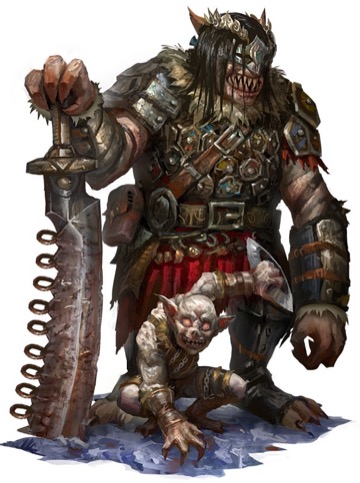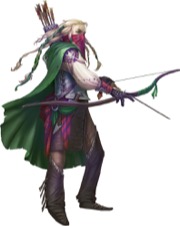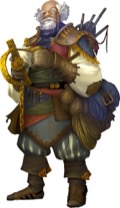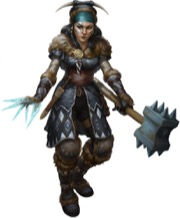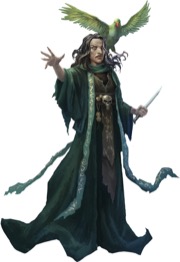With Thurston Hillman's Pathfinder Adventure Path 118: Siege of Stone about to hit subscribers, this is a great time to talk about themes and stereotypes and writing with intention. You often hear that people insist that their pop culture—their video games, their action movies, their roleplaying games—should be free of politics and "agendas," but the truth is that the personal is just politics on the small scale. Your own needs, opinions, and preferences become politics when shared or opposed by multiple people. As an author or a game developer, at some point you have to accept the responsibility that everything you create carries cultural weight, that you describe what is and isn't normal, what is and isn't moral, who is and isn't a protagonist or a villain or even a person. The orcs of Tolkien's Lord of the Rings books were self-loathing and aggressive, without personal goals or culture, while elves are nuanced and individual and reflect a long and storied history—one of these groups is defined as "people" while the other are faceless opponents. Killing a hundred of one is the background noise of the trilogy; killing one of the other is a tragedy that Tolkien uses to dredge up emotion in his readers.
And yes, I realize the irony of this specific example as I talk about an Adventure Path built around conflict with and killing hundreds of members of a specific species.
These are fictional races, but every creative work paints a perspective of the world, and who does and doesn't fill what roles. Many creative repeat what we see in the world around us. Some of us try to depict idealized worlds we want our world to become. Still others exaggerate the evils of the real world into more dire or naked threats, washing away the shades grey to highlight change they feel the world needs. There's no one right way to wield the influence you have as a creative, except perhaps to remain ignorant of it.
One of the common themes in the way Paizo wields our power is to depict women and minorities as heroes. One of our big goals as a group is to paint a world where anyone can be the champion. And we've done that well; we've painted women as crusading nights, spellcasters of devastating power, freedom fighters, gladiatorial champions, and swashbuckling pirates with hearts of gold. Ironfang Invasion specifically kicks off with a female companion there to aid and train the PCs as they grow from nobodies into heroes. But sometimes that urge to champion a cause can push too far, and we end up putting a group on a pedestal. The elves from Tolkien feel flat to a lot of readers because they're TOO good and TOO nice and TOO enlightened; even at their worst, they feel like overbearing parents, rather than people who make mistakes, dirty their hands, or occasionally are just jerks.
The one thing Paizo rarely does is paint women as jerks.
That's not to say we never portray female villains. Queen Ileosa, Areelu Vorlesh, and Queen Abrogail Thrune are unabashedly wicked. The Inner Sea region in general overflows with evil women rulers. All of a certain type: politically powerful, charismatic, and conventionally attractive. Pathfinder has plenty of female villains.
Like I said: The one thing we rarely portray are female jerks. The scum. The bastards. The glorious panoply of disreputable antagonists. Women in Pathfinder or fiction in general are rarely allowed to be dirty and violent and unladylike. One of our goals in Ironfang Invasion was to portray a huge variety of female antagonists, from the traditional "sexy spellcaster" like Arlantia (you'll meet her next month), to masters of tactics and arms like Azersi and Kosseruk, to crazed cultists like Naphexi, to violently anti-social scum like Jang and the redcap Dearga Finlay. In Siege of Stone, author Thurston Hillman gives us the small-potatoes gang leader in Origa, the lecherous bully in Chief Grax, the condescending intellectual in Zanathura, the greedy mercenary in Kisegar, and the scheming manipulator in Elacnida.
We still have plenty of female allies and heroes—Aubrin, Gendowyn, Navah, the overeager treant Longfrond—but Ironfang Invasion is also packed full of women being every flavor of villainous and objectionable—an important facet of representation oft forgotten in our efforts to display a given group as varied, diverse, and fallible. Save your pedestals for statues, and let the women of the Ironfang Invasion scheme, belch, and stab their way into your hearts.
Crystal Frasier
Developer





